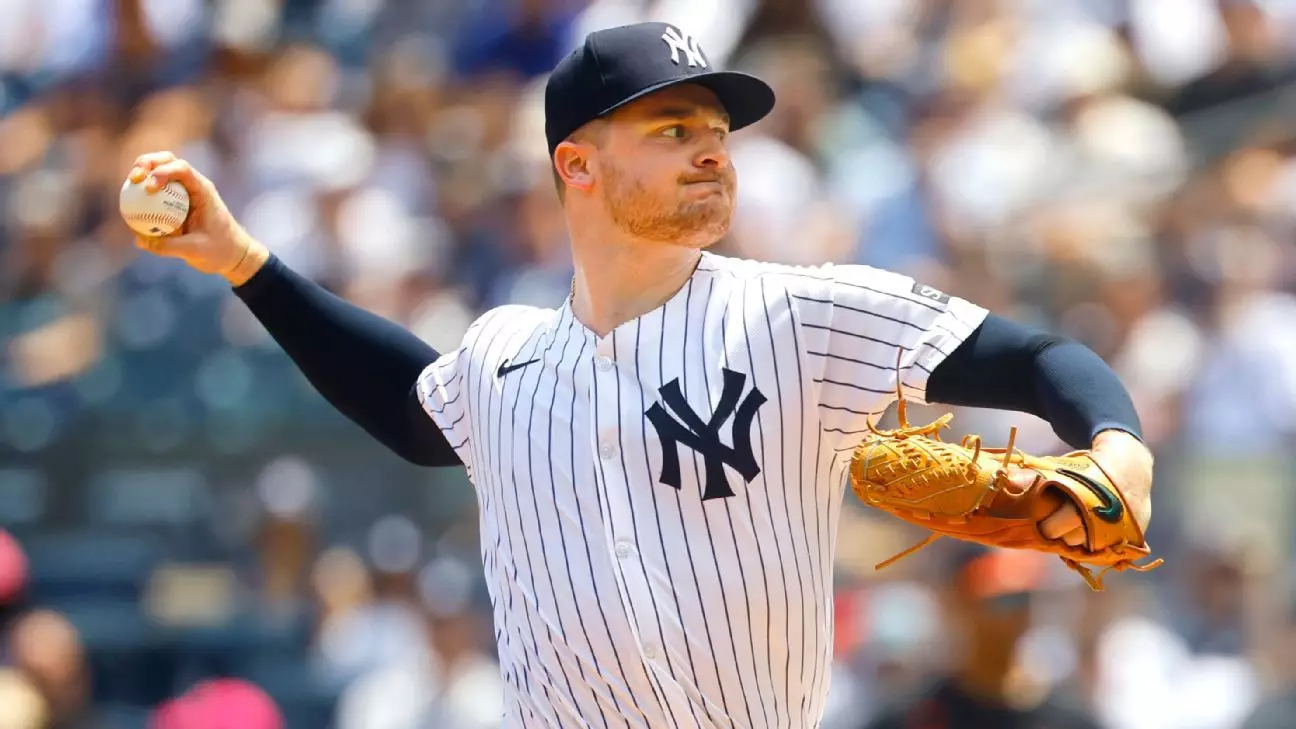The New York Yankees find themselves once again grappling with devastating setbacks to their pitching staff, this time with the heartbreaking news of Clarke Schmidt’s impending Tommy John surgery. Schmidt, a promising young talent, had been carving out a respectable season, but his recent injury underscores the team’s ongoing frustration with injuries that have continuously crippled their rotation. At only 29, Schmidt’s injury, which involves a torn ulnar collateral ligament, not only halts his season but potentially derails his career trajectory, casting a dark shadow over the Yankees’ long-term planning.
This situation reveals a harsh truth: even amidst hope for resurgence, the Yankees’ pitching corps remains fragile and unreliable. Repeated injuries, including Gerrit Cole’s own Tommy John surgery last year, illustrate that their once-formidable rotation is now an increasingly precarious puzzle. While Schmidt’s talent was beginning to shine, such setbacks threaten to stall the momentum and progress the team desperately needs. Injuries such as these expose the underlying vulnerability of relying heavily on the health of individual pitchers, and it prompts us to question the long-term strategic approach of the franchise.
The Erosion of Stability and Trust
The Yankees’ rotation, once a cornerstone of their competitiveness, is bleeding talent and consistency. Schmidt’s injury further complicates a season already marred by chaos in the starting lineup. With Gerrit Cole gone for Tommy John last year, and other key pitchers sidelined with various ailments, the team’s sense of stability has been shattered. This pattern doesn’t just demonstrate bad luck; it reflects a structural issue inherent in the club’s dependency on high mileage and aggressive pitching workloads that deteriorate over time.
Moreover, there’s an unsettling discrepancy between the club’s optimistic outlook and the grim reality faced by players. While Boone and management voice hope and confidence, the clinical reality is far bleaker. Schmidt’s injury was a possibility lurking in the shadows, yet the team’s initial misjudgment—ignoring warning signs of elbow soreness—exposes a systemic problem: a possibly shortsighted view of player health in pursuit of immediate wins. This approach risks sacrificing player longevity for fleeting success, which ultimately undermines team stability.
The Frustration of Failed Investment and Unrealized Promise
Schmidt’s trajectory, marked by his 2017 first-round draft pick status and a promising 3.32 ERA this season, was a beacon of optimism. Yet, injuries reveal the cruel reality that potential alone does not guarantee success. The disappointment is compounded when internal options, like veteran Carlos Carrasco or prospect Cam Schlittler, are called into action to fill a void created by injury—yet none can replace Schmidt’s emerging role or consistency.
This injury crisis signifies more than just a setback; it represents a gut punch to fans and management alike who believed in a rebuilding process centered around young, homegrown talent. It highlights an uncomfortable truth: investing in young pitchers is inherently risky. The Yankees, as a team rooted in chasing both present glory and future stability, now face the harsh truth that their reliance on youth and raw talent must be paired with strategic health management and perhaps more cautious deployment.
The Market and the Future: Scrambling for Solutions
With the trade deadline looming and internal options limited, the Yankees are forced into a reactive stance—looking outward to patch their ailing rotation. The current composition, featuring Max Fried, Carlos Rodon, Will Warren, and Marcus Stroman, is fragile and incomplete without reinforcements. Boone’s mention of pursuing external options underscores a desperation born out of necessity, not strategic planning.
The Yankees’ management must confront an uncomfortable reality: their current rotation is a house built on unstable foundations. While they are likely to scour the market for immediate solutions, this approach risks perpetuating a cycle of short-term fixes rather than addressing deeper issues such as pitching workload, injury prevention, and player health management. The question remains whether the franchise will learn from this endless cycle of injury and reconstruct their approach to athlete health, or continue to chase uncertain short-term gains at the cost of long-term stability.
Schmidt’s fracture-shattered season is emblematic of a larger crisis within the Yankees—a team caught between the obsession with winning now and the necessity of building resilient, sustainable success. This injury underscores both the fragility of their current roster and the urgent need for a more thoughtful, health-conscious approach to player development and management. The path forward involves tough choices—balancing aggressive pursuits for talent with the preservation of player health—and an acknowledgment that sometimes, the greatest victory lies in safeguarding the future rather than chasing fleeting glory.

Leave a Reply